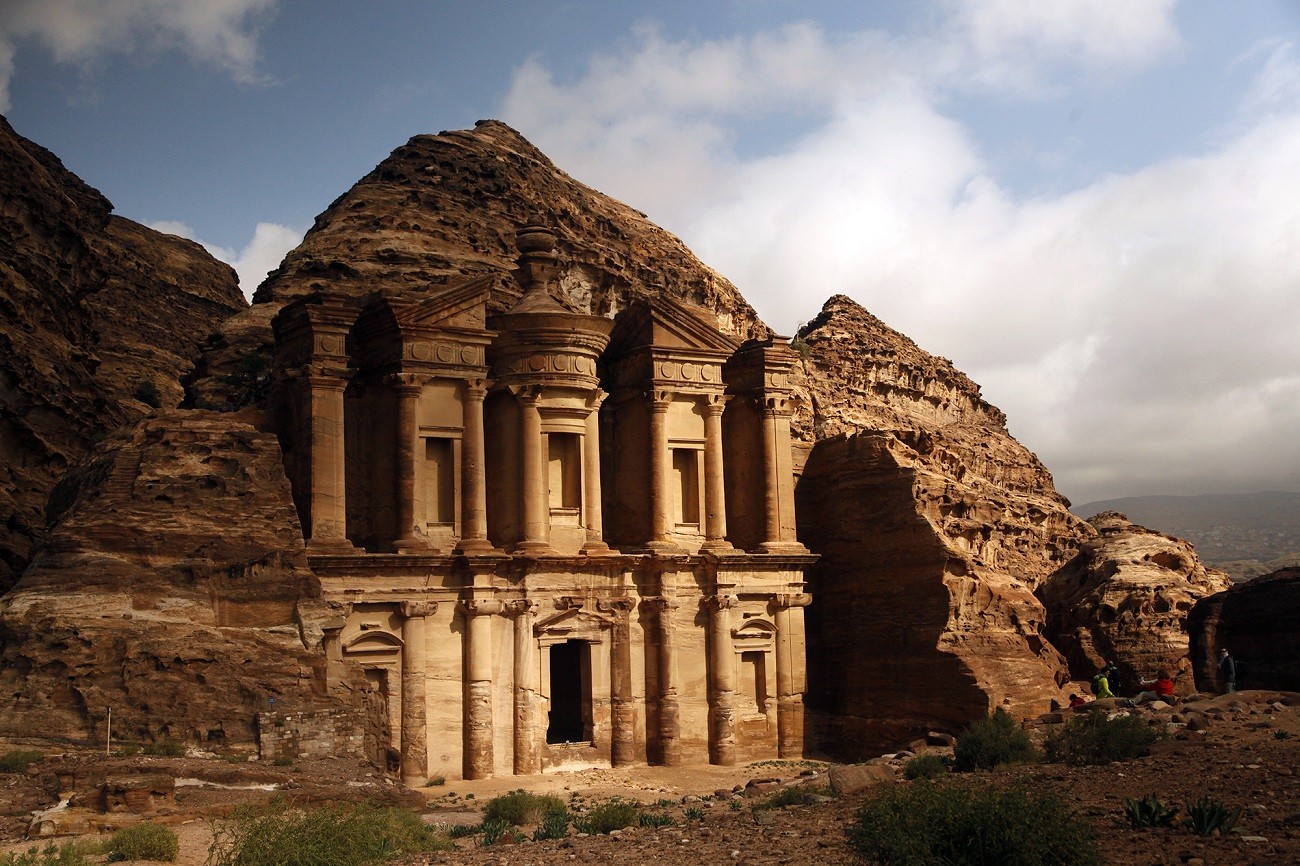History revealed in Little Petra in the rain
Change Size
 In this Feb. 23, 2016 photo, sun peaks out of rain clouds to light up the famous monastery in Petra southern Jordan. The Nabatean ruins are famous worldwide. (AP/Sam McNeil)
In this Feb. 23, 2016 photo, sun peaks out of rain clouds to light up the famous monastery in Petra southern Jordan. The Nabatean ruins are famous worldwide. (AP/Sam McNeil)
R
ecent heavy rains caused flash floods across the Hashemite Kingdom of Jordan, forcing authorities to close the gates of the famed Petra ruins to tourists who were soggy and surly from the downpour.
The iconic site boasts gargantuan temples, canals and statues carved into red cliff walls nearly 2,000 years ago by Al-Anbat, an ancient Arab culture now known as the Nabateans. But on that day, water surged dangerously fast past the ruins.
Yet still, a handful of adventurous tourists heard the siren call of the ancients, and struck out 9 kilometers north (5.6 miles) to Petra's smaller sister site, Little Petra.
Once, these sites were watering holes on the punishing desert route of traders laden with goods to the Indian Ocean, the Red Sea and the Mediterranean. Now, tourists travel the world to see the temples and hike the Nabatean routes recently connected to a 600-kilometer (372-mile) path called the Jordan Trail.
At Little Petra's entrance, locals sold plastic ponchos and umbrellas to bands of shivering tourists. White mist poured over the mountains, obscuring the temples inside into "the cold canyon," Little Petra's name in Arabic, Siq al-Barid.
A thin, submerged footpath through a crack in the rock was the only way in.
During the storm, a calm silence resounded but for the rain's patter, the howling wind and visitors' giggles and splashing.
A French family gingerly forded a gurgling gully swollen with mud. An elderly woman from Milan plodded down the canyon in shoes wrapped in plastic bags. The only warmth was the smoky hearth of Aouath Amarin's hot mint tea served at his trinket shop atop the slick staircase at the end of the canyon.
"A lot of people never see it like this," said Ian Weir, standing out of the rain inside one of the Nabatean temples next to friend Graeme Kinkead.
With Petra rained out, the two 28-year olds from Belfast, Northern Ireland, were pleasantly surprised by Little Petra's damp grandeur. Wrapped in hot pink and bright blue ponchos, the pair beamed at the well-worn carved stones.
Kinkaid said the rain revealed the Nabateans' long-lost secret.
They once carved channels and cisterns into the cliffs to catch and collect the arid region's scant rainfall, "so that life was possible here," he said.
With this water-wealth, the Nabateans securely straddled trade routes until Romans conquered the area, and they began to fade into history.
What remains are ruins attracting tourists, roads used by hikers and locals, and cisterns still catching rain.
Their desert adaptations still work today — if one knows where to look during a rainstorm.
___
If You Go...
JORDAN TRAIL: 600-kilometer (372-mile) north-south route across the country of Jordan, from Um Qais to Aqaba. The trail can be hiked using GPS coordinates but tour operators, group hikes and local guides are available. The trail is not physically marked and includes harsh terrain and areas where water is scarce. Bedouin camps offer room and board; Petra has hotels; camping is free.






